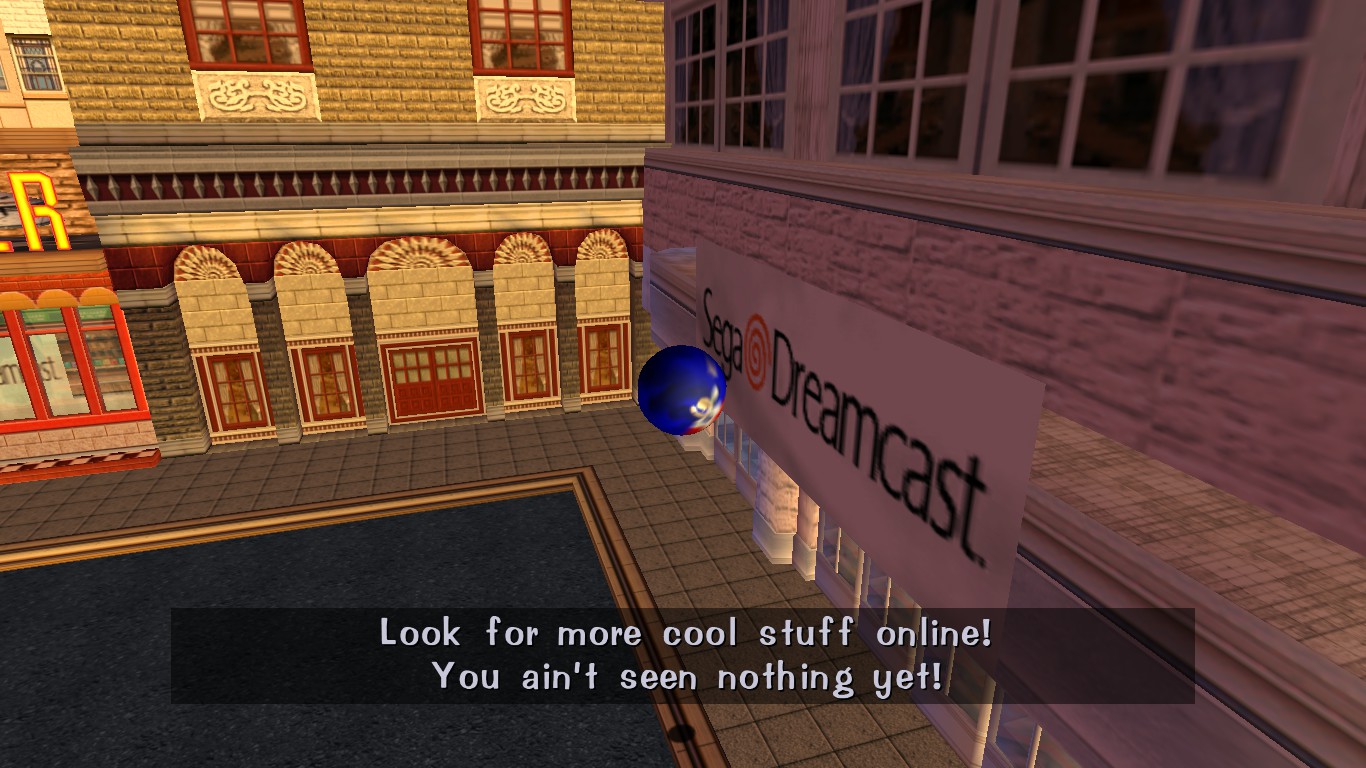A real controversial opinion that I’m sure will piss off the readers: the Dreamcast was awesome. An amazing console that was at least a few years ahead of its time with a catalogue of games that continue to stand the test of time. It suffered materially under a cruel market, but also managed to benefit spiritually from players with a pure heart. There will never be another system like it.
The thing about the Dreamcast is that, yeah, it had great games and it had internet access and all that. But it also had a heart, or at least as much of a heart a piece of electronics can have. There was a soul to the Dreamcast that you felt every time you pressed the power button. Like yeah, the controller kind of sucked, the disc drive sounded like a helicopter rotor, the VMU batteries would die the second you replaced them so you would get angrily beeped at every time you wanted to do a few rounds of Soul Calibur, and those disc-reading lasers weren’t built to last. But it didn’t matter! You could accept the flaws of the Dreamcast because damn it, it was trying! This underdog of a system put together by a company in crisis, putting its remaining hopes and dreams into that little white box. It was ambitious, and it was flawed, a theme that carried over into many of the Dreamcast’s games. None probably moreso than Sonic Adventure.
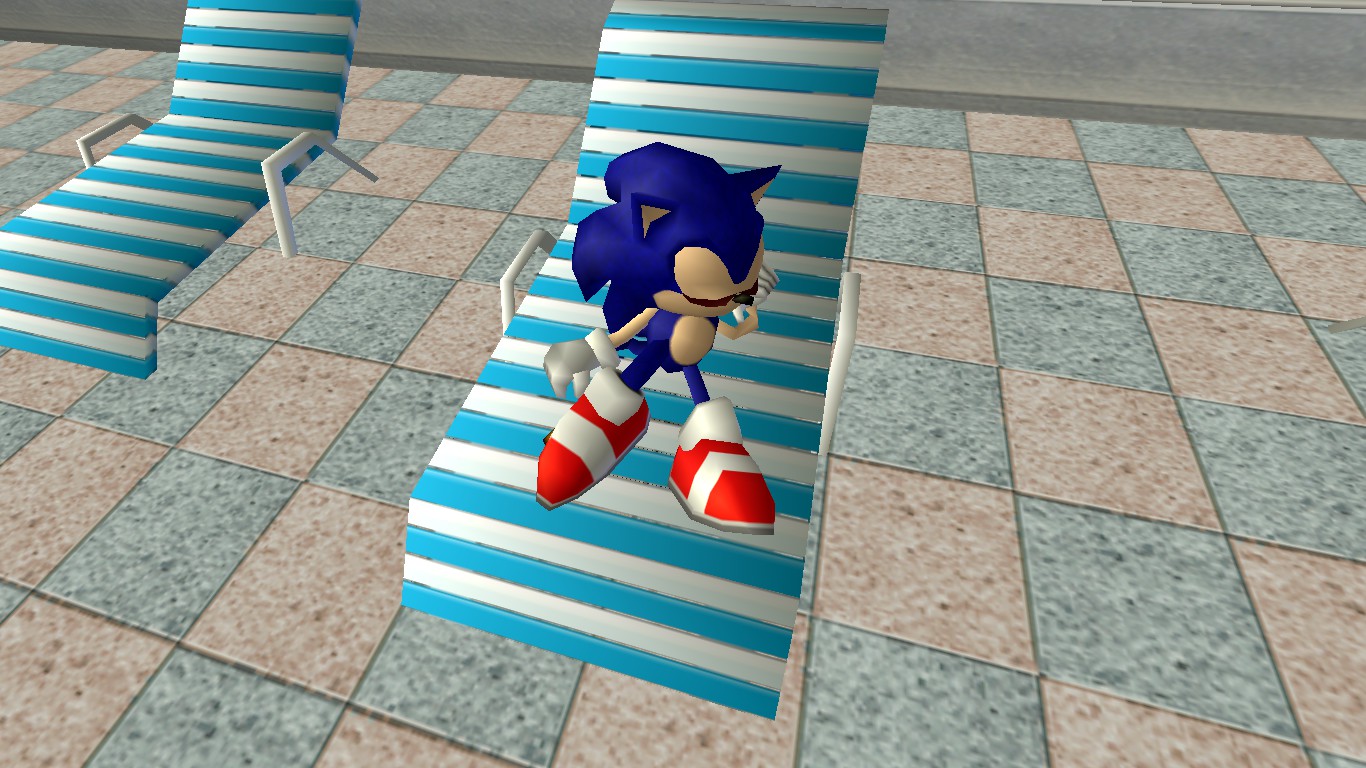
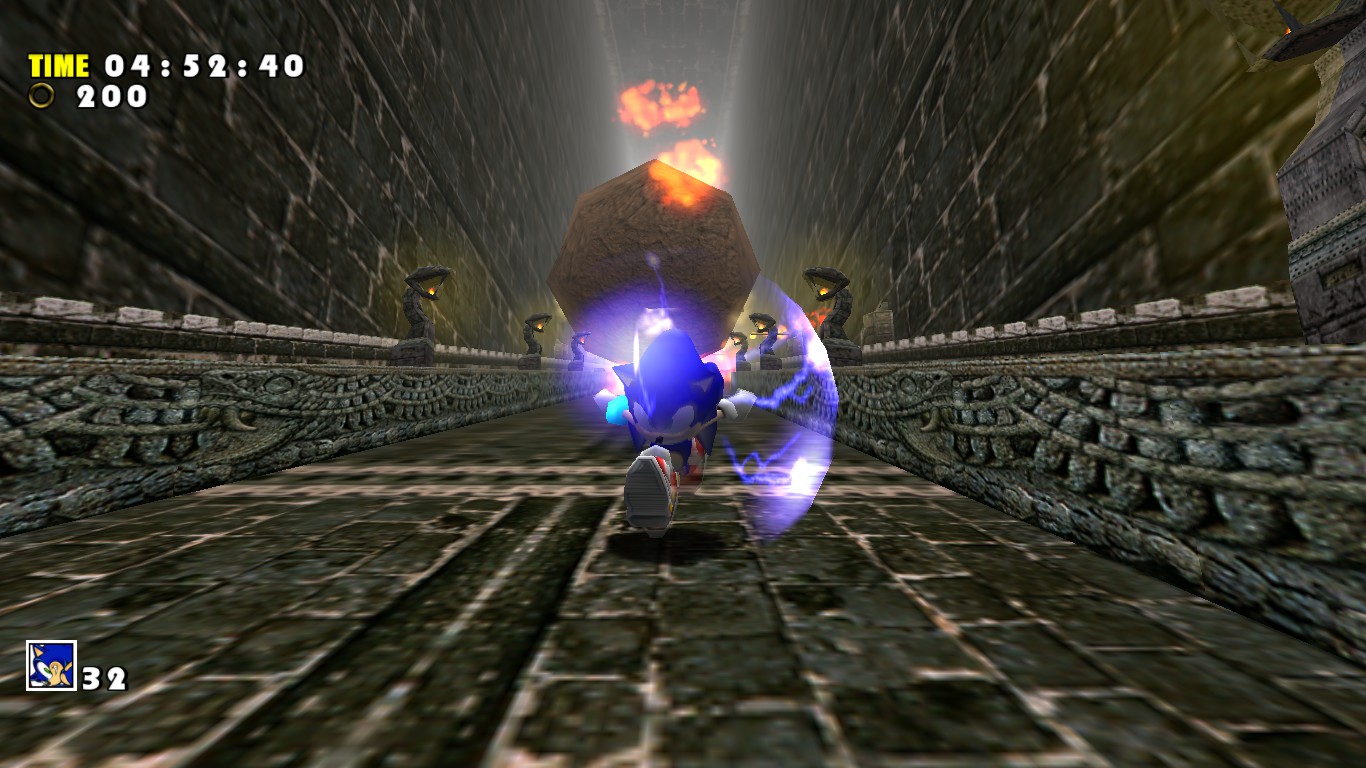
Sonic Adventure is the first actual 3D Sonic game. Not that unplayable Genesis garbage with the hidden Jesus Fish, or the Saturn racing game where every character moved around as if they were drunk. No, this is the real Sonic the Hedgehog. The one that runs fast and jumps on robots. The one with the laissez-faire attitude. The Sonic that the people of my generation know and love. We grew up with the awesome Mega Drive games, and we watched as the sun set with the Dreamcast, before things started getting really fucked up (read: one bad XBox game and some mediocre stuff on Gamecube mixed with Dimps trying to murder the series on handhelds), with a few bright spots to light the overwhelming darkness. Sonic Adventure, the first Sonic Adventure, is probably also the last genuinely great Sonic game we got until the 2010s.
I’ve spent so many years complaining about the fact that we’ve never gotten a Sonic game that looks like the key art in Sonic Jam. Not just the colorful environments, but the lived-in aspect to that art; homes that Sonic and his friends live in, stores that they shop in, places they go to have fun, things like that. Sonic Adventure is the closest we have ever had to that. The game has two different “hub” areas: Station Square, and the Mystic Ruins. In all the years I’ve been playing Sonic Adventure, I have probably spent more time running around in those areas than I have going through the actual levels they’re connected to. They’re not even especially big areas, but big enough to want to double-check every last corner whenever you make progress in the story. There are people in the city, and in the forest, and you can talk to them! There are buildings you can enter! There are hidden emblems and optional character upgrades tucked away for you to find! This is not a game where you just sprint through Green Hill Zone. You sprint through Green Hill Zone, then meander in the background of Green Hill Zone. Up until this point, I never thought that I would want to explore the equivalent of the Wing Fortress and Death Egg zones, but I can! Now, Sonic has a world. It’s not a big world, but a world nonetheless. It adds so much, and really makes Sonic Adventure feel so special.
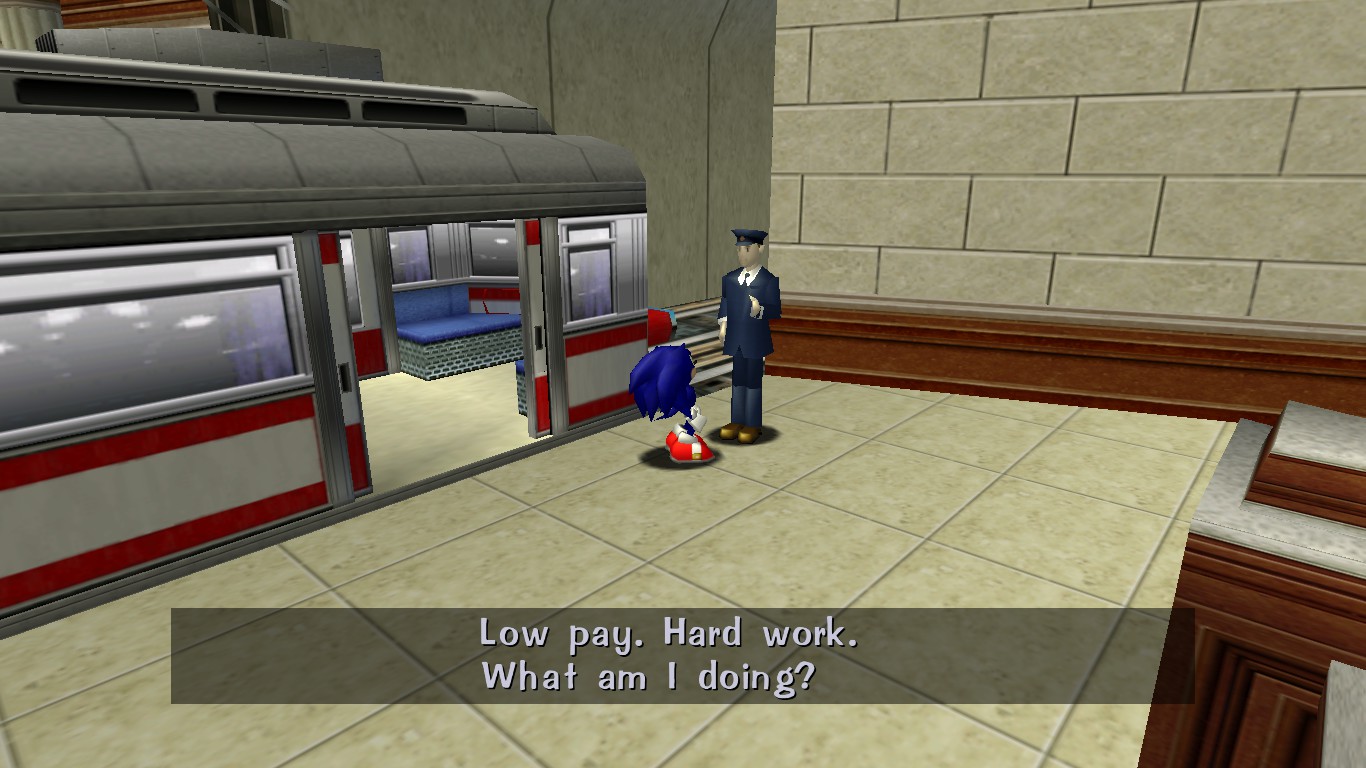
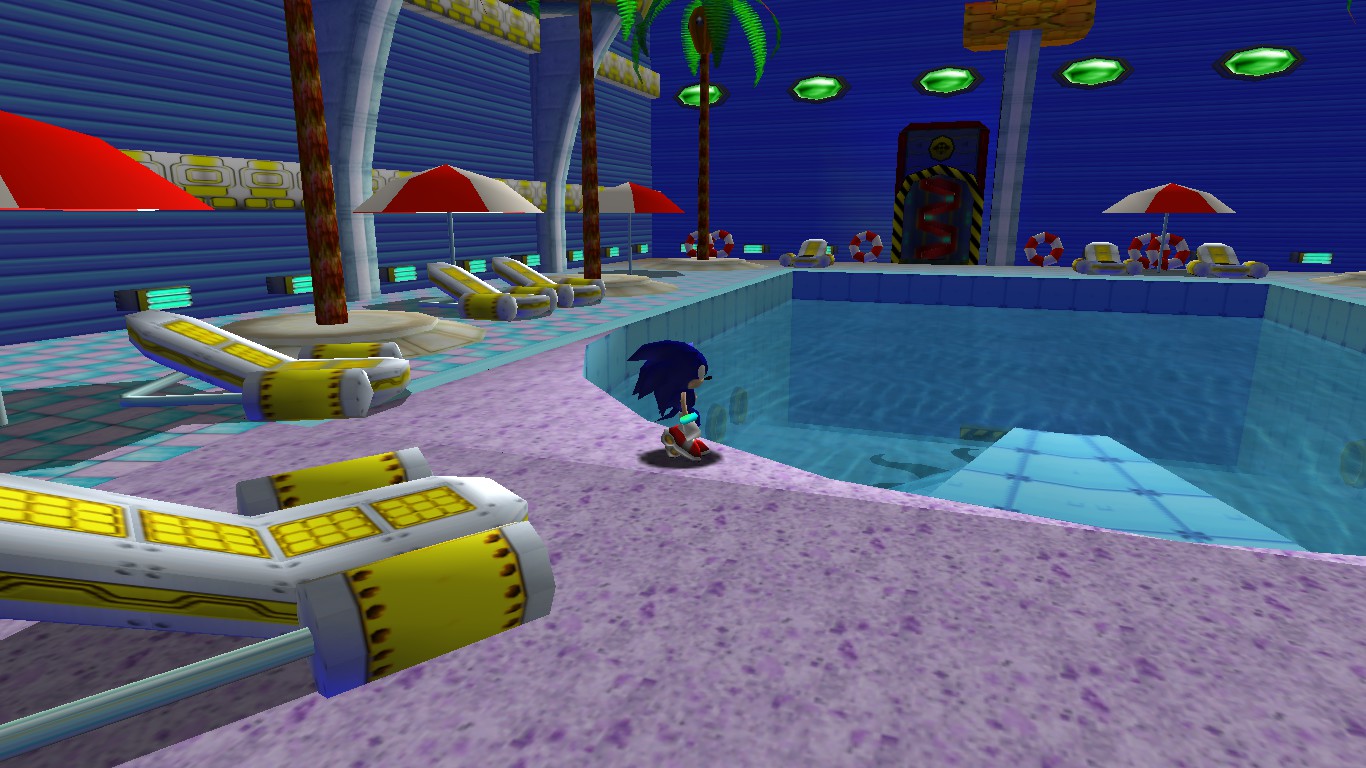
So far, everything sounds great, right? I said that this game was imperfect, and had flaws, didn’t I? Well, let me break down what’s wrong with Sonic Adventure. Controls could be better. You’re always getting stuck on tiny bits of level geometry that gets real fucking annoying. The Knuckles levels are pretty tedious, though they are not the nightmare they would become in Sonic Adventure 2. The game is really buggy; falling through floors and walls is not uncommon, and the new homing attack sometimes likes to not actually work. On top of that, I’m playing the terrible PC port that needed to be modded to hell and back in order 1) actually be playable and 2) adds/fixes things to be as close to the original Dreamcast release as possible, and also includes all of the original Dreamcast DLC available at the click of a mouse. The story kind of sucks too; this was the start of the Sonic series using very generic Shonen Anime cliches in its plot. Like, who could ever forget that fucking ending, of Tails standing amidst the rubble of a destroyed Station Square, where numerous people have presumably died, and saying, “all’s well that ends well, right?”
These are some problems. These are some problems I would be harsh on another game for having. But here’s the thing: that doesn’t matter. Sonic Adventure has heart. It has a charm and a personality that causes me to forgive any issues that I run into. It fell flat in many ways, but Sonic Team tried. It’s ambitious, maybe a little too ambitious, just like the Dreamcast itself, like I said at the beginning of this piece. Despite the fact that game development is anything but, it tends to be presented at this cold, efficient thing. Buy our system, it has more bits. Buy our system, it can do 3D graphics on a 2D system. Buy our system, it has Full-Motion Video. Spreadsheets of processors and CPUs and all this other shit that causes my eyes to glaze over. Don’t get me wrong, the Dreamcast absolutely sold itself on similar things, but it also sold itself on things like internet access, the ability to connect with other people, regardless of geographical location. Games like Phantasy Star Online used a common timezone and a icon-based language in an attempt at bringing people together. Getting back to Sonic Adventure, there were events that could be downloaded to your VMU that you could take part in. Some of those events had time trials, where you had to find an item or complete some sort of objective, and you competed with others to get the fastest time to completion. It was competitive, but in a way designed to bring people together. in 2024, we know full well the horrible realities of bringing people together in gaming spaces, but in 1998, Sega fucking tried. I think the reason myself and so many others still consider the Dreamcast to be the amazing console that it was is because it was the most human video game system. Yeah, it had a bunch of flaws, but it didn’t fucking matter, because the experience of playing the Dreamcast more than made up for it. Sure, every few months, I have to take a screwdriver to the system and move the laser a few inches so I can play Jet Set Radio again, but I don’t care. I still love the Dreamcast.
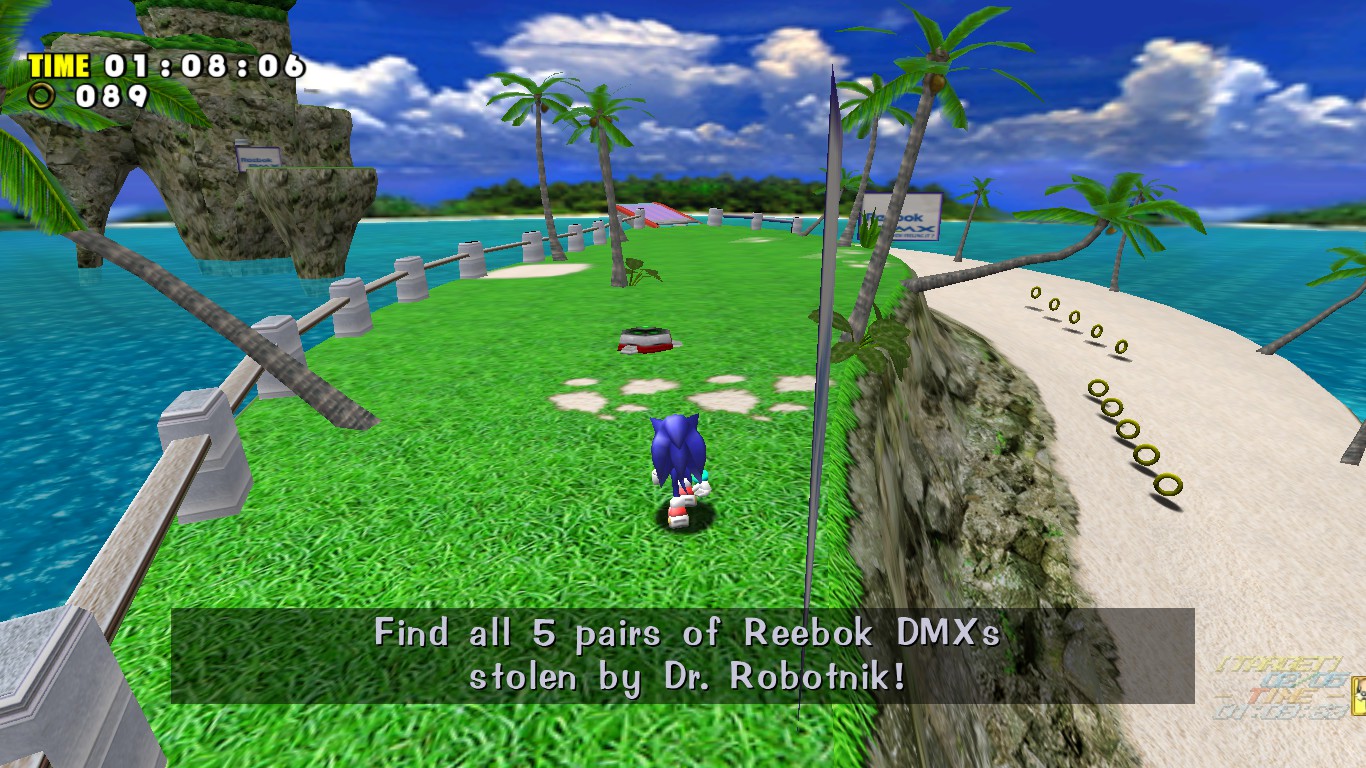
And that’s why I love Sonic Adventure, and think that is the game most emblematic of the Dreamcast, even moreso than Shenmue. Yes, the game is pretty fucking rough at times with numerous problems, but I don’t fucking care. This is a game where I can have Sonic hang out at the pool. There’s an entire series of levels dedicated specifically to fishing. Everyone else hates the fishing levels, I don’t. You play as a big cat named Big The Cat, voiced by Duke Nukem himself, and you get to spend the whole time admiring the excellent looking levels and chilling out with your lure in the water. You can raise virtual pets on the beach. All of this, mixed together with a series of levels where colorful furry characters run and jump around. There’s all the classic Sonic hallmarks: lush forests, snowy mountains, neon casinos, bright amusement parks. The platforming is, previously mentioned issues aside, solid enough. But Sonic Adventure is all about the incidental things. It’s about fighting Dr Eggman as much as it’s about that young woman in Station Square too nervous to ask out the guy working at the burger shop. It’s about fighting a literal god of destruction as much as it is about a little girl waiting outside the Station Square train station for her dad to come home from a long day at work. It’s a mix of the mundane and the spectacular. Sonic Adventure is just that, an adventure. It is an experience. A game that makes the Dreamcast the Dreamcast.
